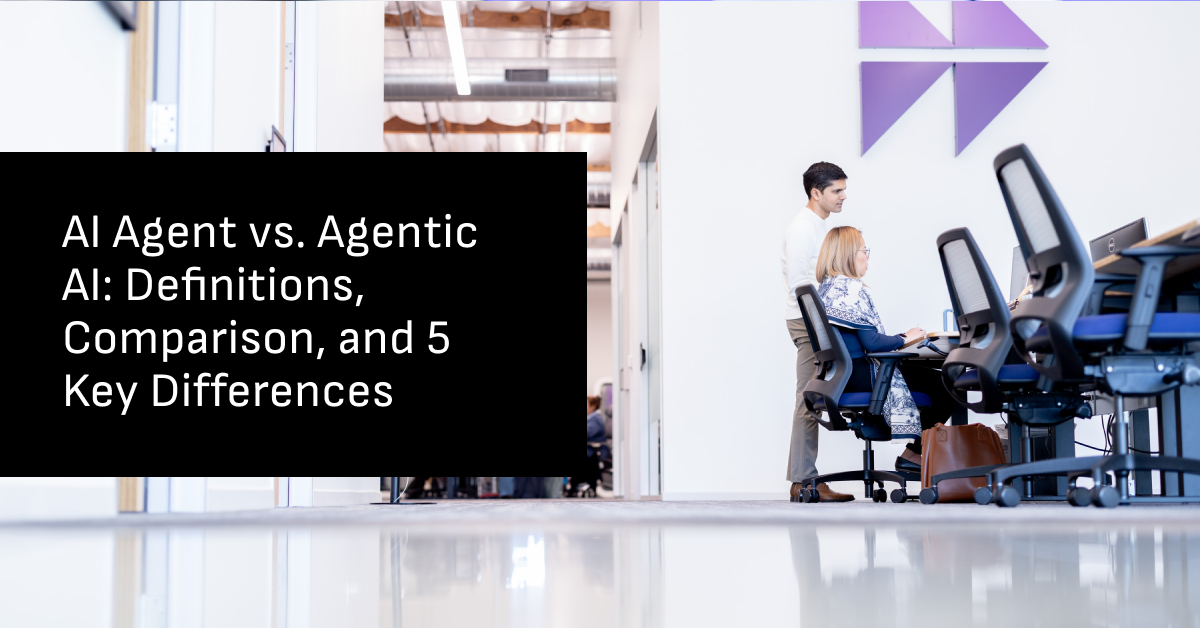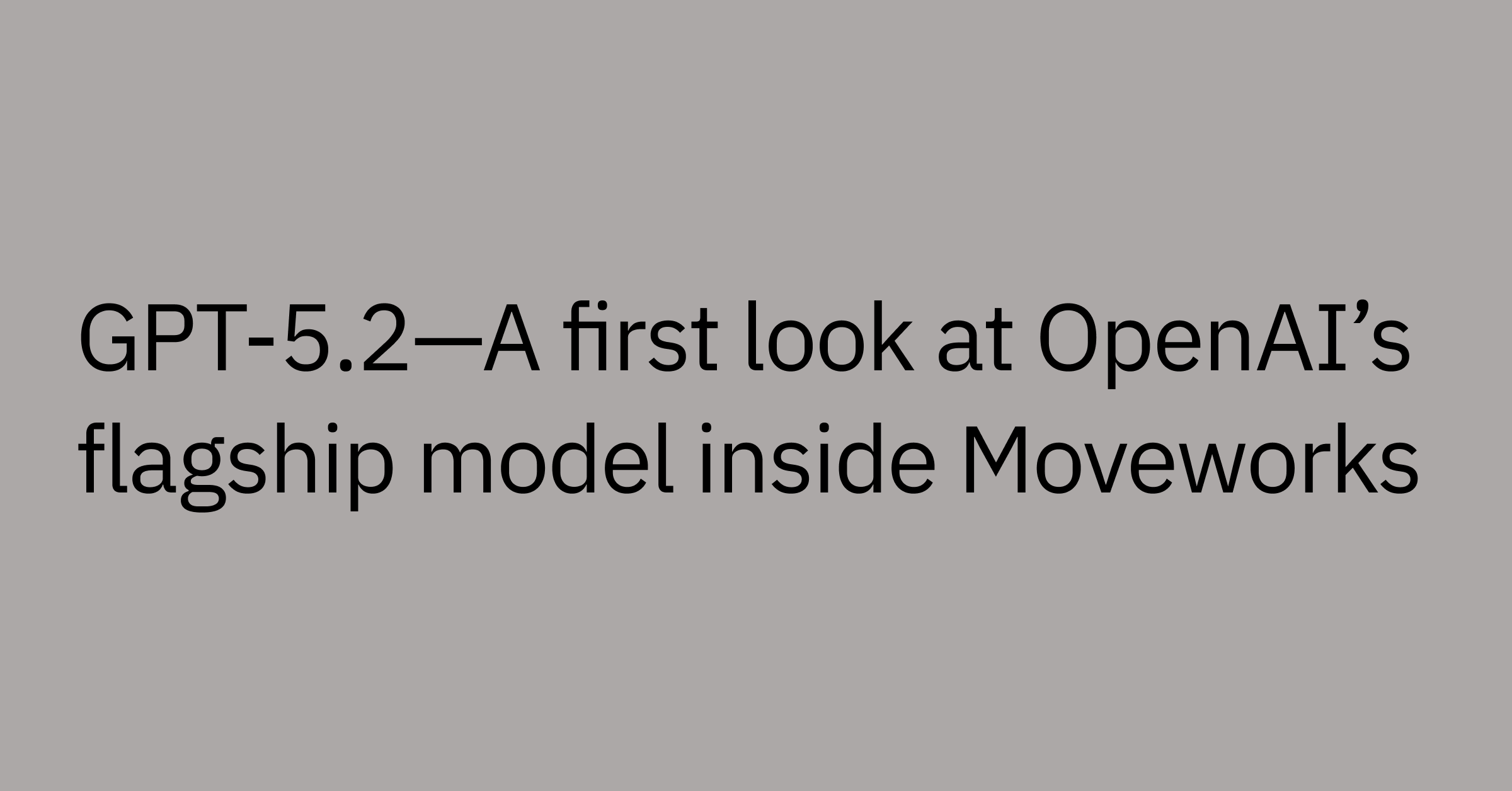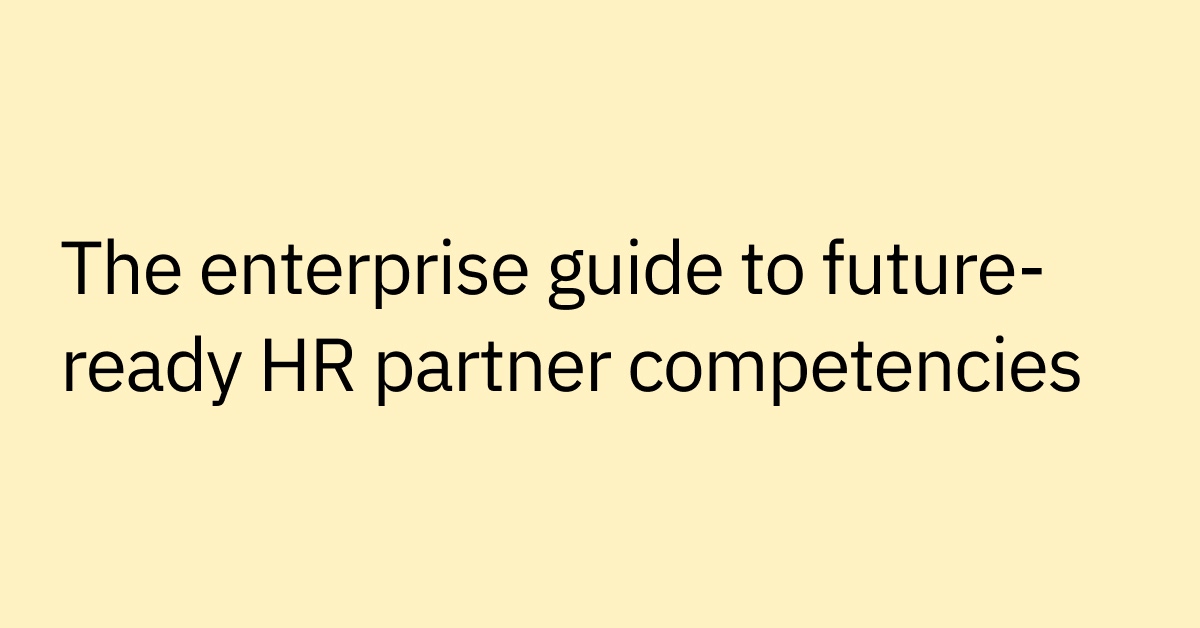Table of contents
Many businesses are looking to capitalize on agentic AI, however, not all will do so effectively. That’s why understanding the differences between the AI agents and agentic AI technologies is a must if you want to avoid investing in the wrong solution for your needs.
So, should you invest in AI agents, agentic AI, or both? AI agents are good at handling specific tasks with precision, while agentic AI is often used for more complex, adaptive decision-making and real-time problem-solving.
Understanding the distinction between these technologies can mean the difference between investing an incomplete solution versus transforming your operations and entire organization.
That’s why this blog will help you to understand the differences, key use cases, and strengths of each so you can make smart choices about your AI investments.
What is an AI agent?
An AI agent is a software program designed to understand its environment, process information, and take actions to achieve specific goals. These agents can range from simple to highly advanced—whether it’s setting reminders with Siri or handling more complex tasks using deep learning models.
When multiple AI agents work together, their capabilities can grow exponentially. Instead of focusing on just one part of a process, a team of AI agents (or, an agentic AI system) can collaborate to handle complex workflows and achieve more advanced goals. For instance, in customer service, one AI agent might process language, another might search knowledge bases, and a third could handle ticket routing—all working together to solve customer issues efficiently.
AI agents can operate both independently and as a team. Each one makes decisions based on what it’s programmed to do and the data it receives. But when you bring multiple agents together, they can take on challenges that would be too complex for a single agent to handle.
From AI agent to agentic AI
This teamwork is what connects individual AI agents to more advanced agentic AI systems. While AI agents can be considered as the building blocks, agentic AI is a more sophisticated setup that puts all of the building blocks together, allowing multiple agents to work together to achieve big-picture goals for an organization.
This mix of autonomy, flexibility, and focus makes AI agents ideal for handling both routine, well-defined tasks that need to be done consistently, as well as new and dynamic tasks—whether they be simple or complex. In fact, 82% of companies plan to adopt AI agents in the next three years.
Types of AI agents
Agents can also be designed for different tasks:
- Learning agents adapt based on experience, like a customer service chatbot that gets better at responding over time through interactions.
- Utility-based agents make decisions by weighing possible outcomes, similar to an AI trading system that analyzes market factors.
- Goal-based agents focus on achieving specific objectives, like an automated inventory system that keeps stock levels right.
- Reflex agents react directly to user inputs using set rules, such as a smart thermostat that adjusts the temperature based on current conditions.
- Model-based agents use an internal representation of their environment to make smarter decisions.
What is agentic AI?
Agentic AI refers to artificial intelligence systems that feature autonomous decision-making, goal-driven actions, learning and adapting capabilities, and advanced reasoning.
Unlike AI agents, which utilize a single agent to focus on a specific task, agentic AI employs multiple agents to handle complex workflows on their own, learning and adapting in real-time based on experience and feedback.
An IT support system using non-agentic AI might just sort support tickets and give scripted replies. However, an agentic AI-powered system can understand a user's issue through natural language, access the right systems, figure out the best solution, and then take action, like resetting passwords or changing permissions.
There are four main features that set agentic AI apart from traditional AI:
Autonomous decision-making: Agentic AI doesn’t just follow simple rules—it can also analyze situations, decide what to do, and act independently without the need for constant human input.
Goal-driven actions: While traditional AI focuses on recognizing patterns, agentic AI works toward specific objectives by planning and carrying out multi-step tasks.
Learning and adapting: Instead of static algorithms, agentic AI learns from interactions and outcomes, improving its performance and adjusting its approach in real time.
Advanced reasoning: Agentic AI can connect to multiple systems, coordinate across different tools and databases, and autonomously manage complex workflows.
While traditional AI models can be powerful within their narrow domains like data analysis and generating content, agentic AI goes beyond by providing a higher level of flexibility, actionability, and scalability in diverse applications. When properly implemented, it can help automate tasks and streamline processes with reduced human intervention.
What’s the difference between agentic AI and AI agents?
The relationship between AI agents and agentic AI can be confusing since both have the ability to gather information, make decisions, and operate autonomously. So what’s the difference?
AI agents are individual entities designed to handle specific tasks within defined parameters. For example, a chatbot that answers customer service questions, or an automated scheduling assistant that books meetings. These agents operate independently within their designated domain, using rule-based systems or machine learning models to complete their assigned tasks.
Agentic AI acts like a conductor, bringing together multiple AI agents and systems to meet bigger business goals. Take IT support as an example— an agentic AI program might manage a ticket classification agent, a knowledge base search agent, and a user communication agent all at once, while deciding on things like escalation paths and priority levels. This kind of coordination handles complex workflows with multiple steps, system interactions, and decision points—much more than what any single AI agent could do on its own.
It can approve requests on its own, suggest alternatives, coordinate coverage, update systems, and keep everyone in the loop. Over time, it is able to get smarter by learning from patterns, improving approvals, updating its criteria, and making the process even more efficient.
5 core distinctions between AI agents and agentic AI
AI agents and agentic AI offer plenty of value when planning an automation strategy, but how they’re used and their benefits can vary significantly. So, let’s look at where they differ in these core categories:
1. Autonomy and decision-making
The main difference between AI agents and agentic AI comes down to autonomy. AI agents operate within predefined frameworks, but can adapt and make independent decisions based on learned patterns and real-time inputs, such as traffic conditions for self-driving cars. Agentic AI, however, can step it up a notch with more advanced decision-making capabilities like:
- Proactively identifying and pursuing strategic goals, rather than just responding to inputs
- Evaluating multiple options to make complex decisions, goal-driven decisions
- Learning from experience to refine and improve performance
- Adapting to real-time changes in conditions
2. Complexity and learning
AI agents can handle specific tasks that follow clear patterns, but agentic AI goes further with its ability to learn, adapt, and refine how it solves for goals. While AI agents typically improve through programming updates, agentic AI can learn from individual interactions, and can adjust its approach based on results and new circumstances.
This adaptability is especially useful for dynamic environments or processes. Agentic AI can spot new trends, tweak its approach, and even come up with new solutions to emerging challenges—something individual AI agents just can’t do.
3. Functionalities
Another major difference lies in their range of functionalities. AI agents are designed for more specific tasks and operate within defined parameters, which can mean their effectiveness is limited by their programming and training. Agentic AI operates on a broader scale, combining multiple skills to handle complex, multi-step processes that require coordination across systems and domains.
4. Proactiveness
Another big distinction is how they take action. While capable of learning over time, individual AI agents can be reactive, responding to specific triggers and requests. For example, an AI agent might process a password reset request when a user submits it.
Agentic AI can be more proactive, by combining multiple agents to adapt, create new solutions, and take action without being explicitly prompted. For instance, it could spot patterns in access issues, flag potential cybersecurity vulnerabilities, and suggest fixes before even more complex problems arise.
5. Planning
When it comes to planning, these technologies take different approaches. AI agents can be set up to handle everything from quick tasks to long-term goals, depending on how they’re built. Agentic AI works by coordinating multiple systems and processes at once, keeping actions aligned with organizational goals, managing complex workflows, and improving processes over time.
Key use cases for agentic AI and AI agents
AI agents and agentic AI are already transforming enterprise operations. In fact, a recent survey found that 65% of companies currently use generative AI and AI agents. Knowing how these technologies fit into specific use cases can help businesses like yours get the most out of their AI investments.
Streamline HR workflows
Human resources teams juggle everything from sourcing top talent to keeping current employees happy. Agentic AI is helping automate HR by taking a broader approach, managing multiple processes, and adjusting to the workforce's changing needs. It can:
- Analyze employee request trends, automatically update self-service tools, and make system-wide improvements—all without needing manual input.
- Manage the entire onboarding process by syncing IT, facilities, and HR systems, while adjusting workflows to fit specific roles and department needs.
- Personalize benefits recommendations based on employee feedback and usage.
Individual AI agents, on the other hand, can enhance specific HR tasks, such as:
- Processing and assisting in evaluating leave requests by analyzing factors like team coverage and project deadlines
- Providing personalized benefits guidance by analyzing employee roles and historical data
- Managing document workflows through automated validation, routing, and compliance checks
See how Palo Alto Networks saved 351,000 productivity hours with agentic AI.
Enhance service desk automation
Service desk operations are a perfect example of how these technologies work together. By 2028, around 15% of daily work decisions will be handled automatically by agentic AI. This could include tasks like:
- Routing and prioritizing tickets based on business impact
- Learning from past resolutions to recommend the best solutions
- Managing complex, multi-step resolutions across different systems
An AI agent can handle specific service desk tasks like:
- Automating password resets through identity verification and policy enforcement
- Providing first-level responses to common IT issues using chatbots and virtual assistants
- Managing access requests based on predefined security rules and compliance policies
Leidos can attest to the power of agentic AI for IT support—it reduced their mean time to resolution by a whopping 99%.
Strengthen security
Security is another use case where both technologies play key but different roles in keeping enterprise assets safe. As highlighted in the NCSC's 2024 assessment, AI is expected to significantly increase the scale and impact of cyberattacks over the next two years. But it also offers huge opportunities for defenders to level up their security game.
Agentic AI takes a big-picture approach to security, delivering improved threat detection and resolution by:
- Spotting patterns in network traffic to catch potential threats before they happen
- Adjusting security protocols as new threats emerge
- Syncing responses across different security tools and systems
- Learning from new threats to get even better at detecting them in the future
An AI agent can effectively handle security tasks, like:
- Triggering predefined responses to contain and mitigate real-time threats
- Managing access control and authentication based on established security policies and risk assessments
- Automating routine scans and updates to keep systems secure to enforce compliance and detect vulnerabilities
The future of agentic AI and AI agents for automation
In just a few short years, we've gone from using AI for simple automation tasks to having it fully manage complex business operations with little to no human intervention. And the future looks even more exciting with the rise of AI agents and agentic AI.
According to PWC, industries from legal to healthcare and finance are already seeing cost and time savings through AI applications, as well as revenue boosts through increased sales.
These rapid advancements are changing how organizations think about automation and digital transformation. We’re moving toward smarter systems that combine AI’s reliability in handling tasks with the adaptive intelligence of agentic AI.
AI is also getting smarter, with improved learning capabilities that cut down on manual training and advanced decision-making algorithms that can tackle complex challenges. The future of AI is moving beyond simple automations or chatbots, looking smarter, faster, and more powerful than ever.
Quickly build custom agentic workflows
Moveworks is leading the way in AI innovation, with agentic AI that improves enterprise operations. Our solution integrates across your business environment out of the box, enabling you to quickly generate powerful results.
Transform how your business automates workflows. With Moveworks’ agentic AI, you can:
- Automate intelligently to route and resolve requests according to your business context
- Instantly find answers across systems and enhance employee productivity
- Integrate seamlessly with your enterprise systems through an easy setup
- Scale with your organization's growth while ensuring top-notch security and compliance
Ready to see how your enterprise can use agentic AI? Download our guide to getting started with agentic automation or sign up for a demo today.



